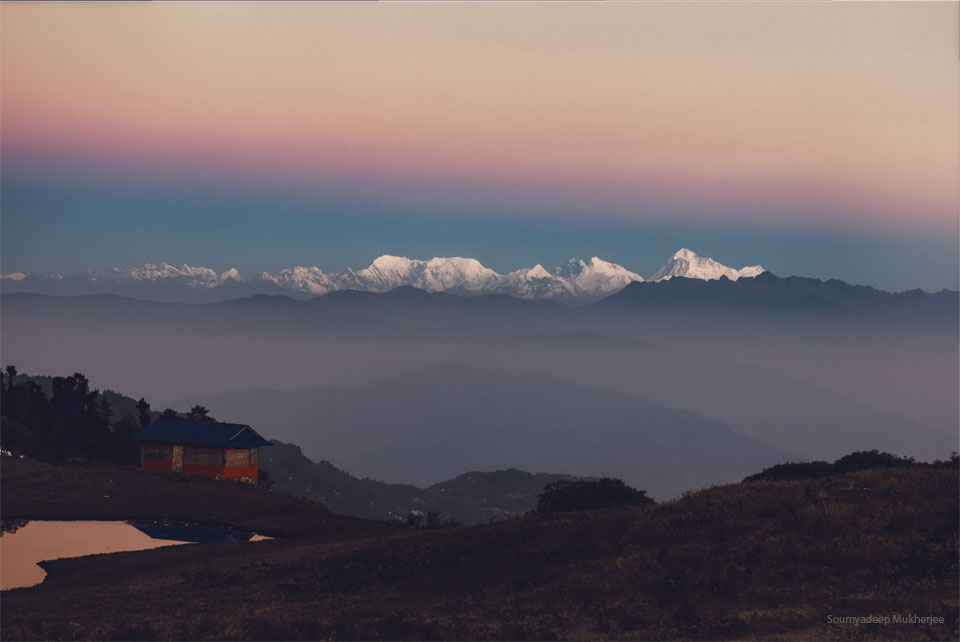2023年6月26日
The Belt of Venus over Mount Everest
Image Credit & Copyright: Soumyadeep Mukherjee
Explanation: You’ve surely seen it, but you might not have noticed it. During a cloudless twilight, just before sunrise or after sunset, part of the atmosphere above the horizon appears slightly dark and off-color. Called the Belt of Venus, this transitional band between the dark eclipsed sky and the bright day sky can be seen most prominently in the direction opposite the Sun. Straight above, blue sky is normal sunlight reflecting off the atmosphere, while near the horizon the clear sky can appear more orange or red. In the Belt of Venus, the atmosphere reflects more light from the setting (or rising) Sun and so appears more red. Featured here, the Belt of Venus was photographed over several Himalayan mountains including, second from the right, Mount Everest, the tallest mountain on Earth. Although usually not mentioned, the belt is frequently caught by accident in other photographs.
Tomorrow’s picture: ultraviolet red planet
珠穆朗玛峰上空的金星带
影像版权与提供: Soumyadeep Mukherjee
说明: 你一定看过它,只是不见得会注意到。在清朗的暮曙光期间,时值日出前或日落后,地平线上方的大气看似稍暗并有点色偏。这个名为金星带的色偏带,介于受到地球影子遮掩的暗色天空与蓝天之间,尤其以与太阳反向的天空最为明显。金星带上方的蓝天,则是大气反射寻常的阳光所造成。不过,金星带源自反射日落或日出前的阳光,因此色泽偏红。在这幅呈现喜马拉雅山脉上方金星带的主题影像里,可见到包括珠穆朗玛峰(左起二)在内的数座地球最高峰。在人们所拍摄的照片里,金星带经常在不经意之间入镜,然而却往往未特别加以注记。 (在上图里,依序有Lhotse 洛子峰、Everest 珠穆朗玛峰、及Makalu 马卡鲁峰)
明日的图片: ultraviolet red planet







